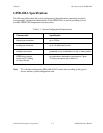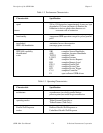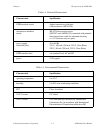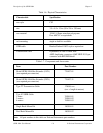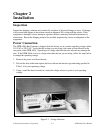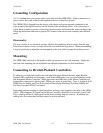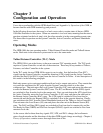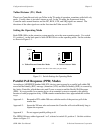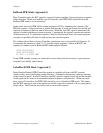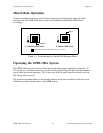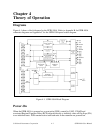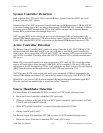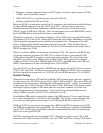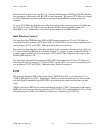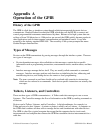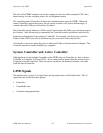Chapter 3 Configuration and Operation
© National Instruments Corporation 3-3 GPIB-100A User Manual
Buffered PPR Mode (Approach 1)
Most Controllers pulse the IDY signal for a period of time exceeding 2 µsec and expect a response
within that time. When used with this type of Controller, the GPIB-100A should be left in the
Buffered PPR mode as set at the factory.
In this mode, the local GPIB-100A extender responds to IDY by outputting the contents of the
PPR data register. At the same time, a parallel poll message is sent to the remote bus and the poll
response is returned to the local unit in due course. When the local IDY signal is unasserted, the
register is loaded with the new remote response. Consequently the register contains the response
of the previous poll. To obtain the response of both local and remote buses, the control program
executes two parallel polls back-to-back and uses the second response.
The software driver library of most Controllers contains an easy-to-use parallel poll function. If,
for example, the function is called PPOLL and the control program is written in BASIC, the
sequence to conduct a poll in Buffered PPR mode might be like this:
CALL PPOLL(PPR)
CALL PPOLL(PPR)
IF PPR > 0 GOTO NNN
If two GPIB extender systems are connected in series, three polls are necessary to get responses
from the local, middle, and far buses.
Unbuffered PPR Mode (Approach 2)
Many Hewlett-Packard GPIB Controllers remain in a parallel poll state with IDY asserted
whenever they are not performing another function. A change in the response causes an interrupt
of the control program. In other Controllers, the IDY signal is toggled on and off and the duration
of the signal can be varied to accommodate delayed responses over extenders. When used with
these types of Controllers, the GPIB-100A should be set to Unbuffered PPR mode. This means
that the IDY message is sent to the remote bus and the response is returned as fast as propagation
delays allow. The Controller must allow time to receive the response.



